Here, I’ll tell you all about Chinkiang vinegar, as well as Chinese black vinegar more broadly, and why you should always have a bottle of it in your pantry.
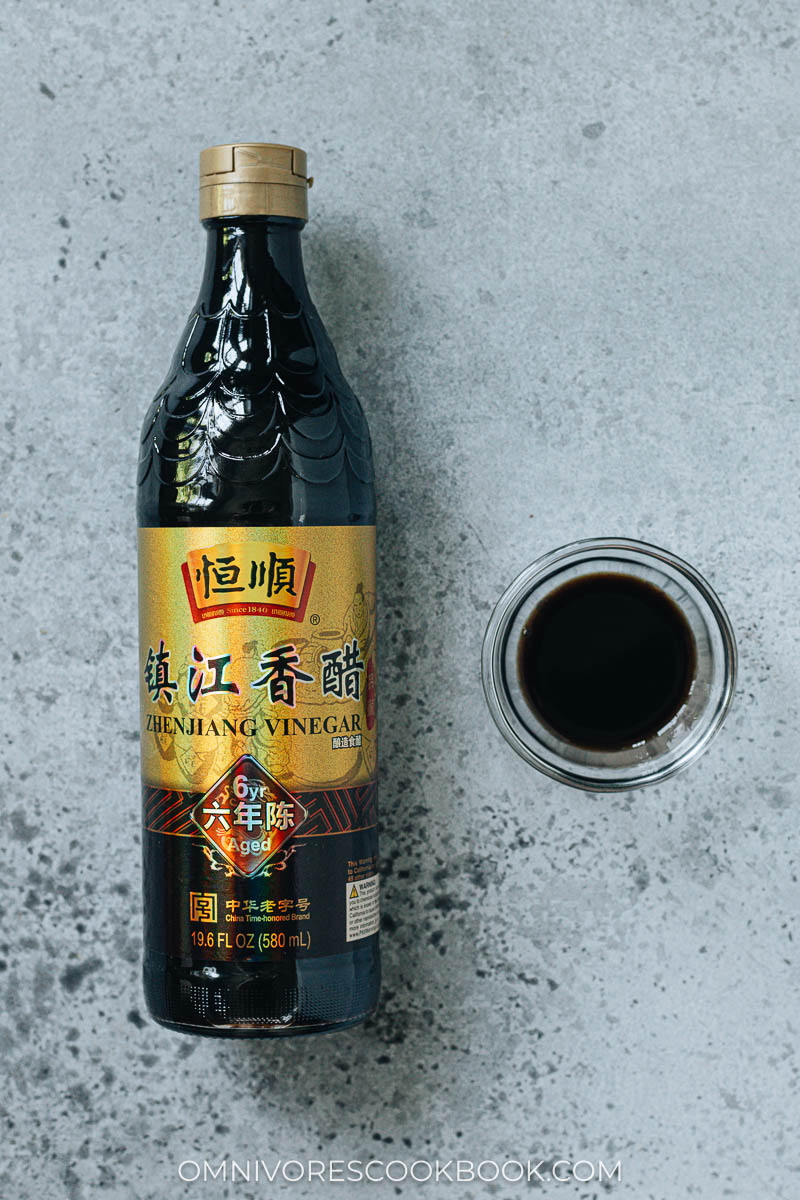
Table of contents
What is Chinkiang Vinegar?
Chinkiang vinegar is a variety of vinegar made in the city of Zhenjiang (historically spelled Chinkiang) in Jiangsu province, not far from Shanghai. It has a dark brown color and a signature aroma that gives many Chinese dishes an authentic pop.
Glutinous rice is the primary ingredient in Chinkiang vinegar, though it also includes wheat bran, which gives it a malty character. Other grains, such as sorghum or barley, or peas may also be included in the recipe.
In terms of acidity, Chinkiang vinegar is typically between 5.5 and 6.5%, though this will vary by brand and type.
How is Chinkiang Vinegar Made?
Chinkiang vinegar is made using a method that dates back over a thousand years:
- First, glutinous rice is steamed until soft and sticky, then allowed to cool a bit.
- The rice is then inoculated with a yeast starter, typically from a previous batch of vinegar.
- Together with wheat bran and water, the rice is added into a fermentation vat and allowed to ferment.
- Fermentation may take anywhere from a few weeks to a few months.
- After fermentation, the rice is filtered and transferred to clay urns where it will age anywhere from 6 months to 10+ years. Aging helps the sharpness to mellow and the complex aroma and flavor to develop.
- Salt, sugar, and other finishing ingredients may be added at the end, prior to blending and bottling.
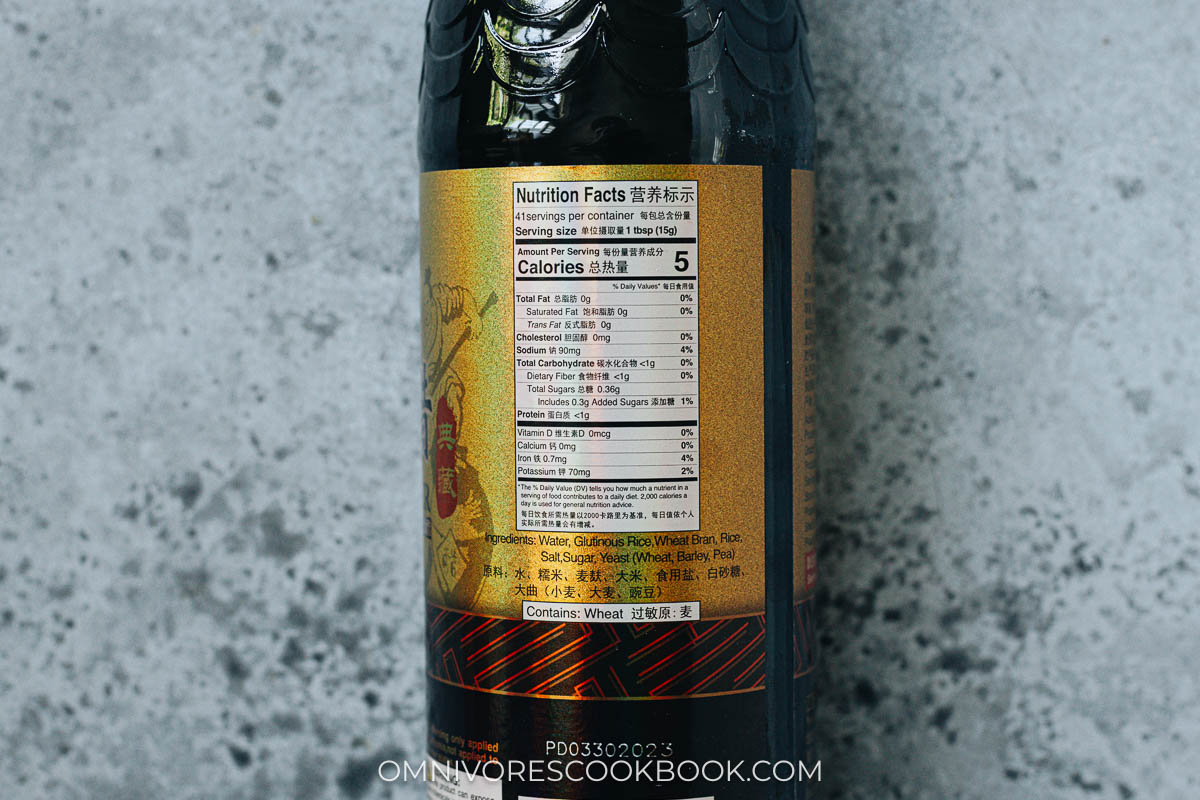
What does Chinkiang Vinegar Taste Like?
Chinkiang vinegar has a dry, tart flavor that is balanced by a malty umami and accented by a slightly woody and smoky aroma. It has a touch of sweetness, but you have to look for it.
The malty umami is what makes Chinkiang vinegar special, as it gives dishes and sauces a characteristic flavor and fragrance, in addition to its sourness.
Uses for Chinkiang Vinegar in Chinese Cooking
Chinkiang vinegar is the king of Chinese black vinegar because it’s distinctive enough to make authentic-tasting dishes from all over the country, yet neutral enough that it doesn’t clash with any of the regional cuisines, which can be quite different from one another.
Being such a versatile vinegar, you can use Chinkiang vinegar in most Chinese contexts that call for vinegar. That means:
- Soup – Hot and sour soup gets its sourness from vinegar, and Chinkiang will give it just the right fragrance.
- Stir fry sauce – Chinkiang vinegar is so robust that it can stand up to lots of spice, salt, and sweetness. Sichuan eggplant, kung pao chicken, and sweet and sour ribs are great examples.
- Dipping sauce – The savory tartness of Chinkiang balances the richness of dumpling filling perfectly. It is my go-to dipping sauce for all kinds of dumplings, including boiled dumplings, potstickers, soup dumplings and shumai.
- Salad – Chinkiang is super common in Chinese cold dishes (aka salads) and my cucumber salad, potato salad, and tofu and celery salad all depend on the vinegar for its bright pop.
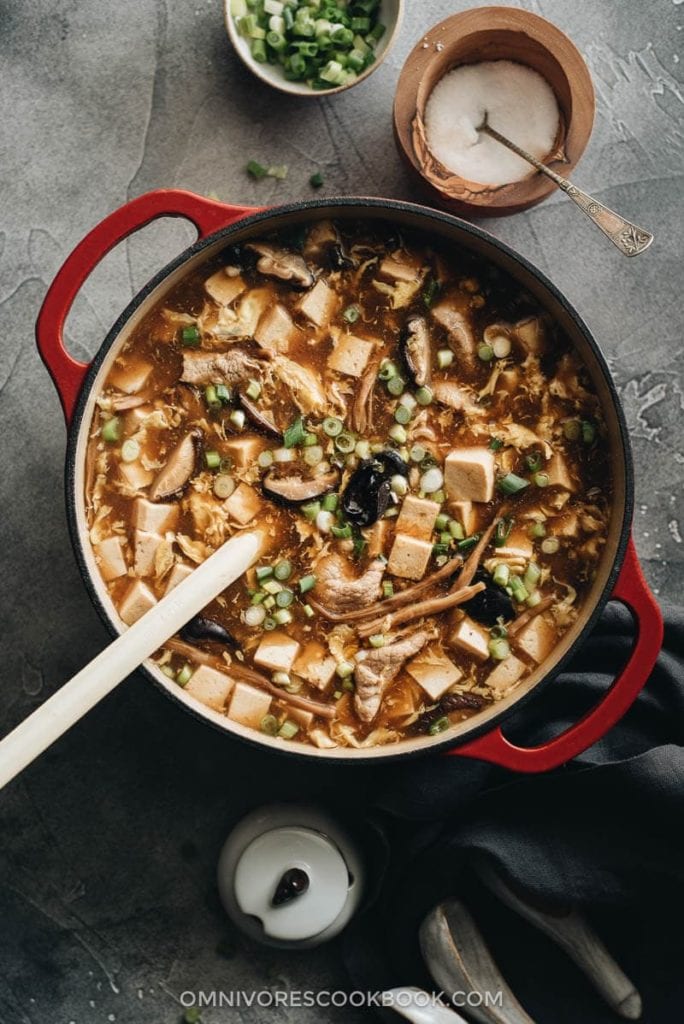
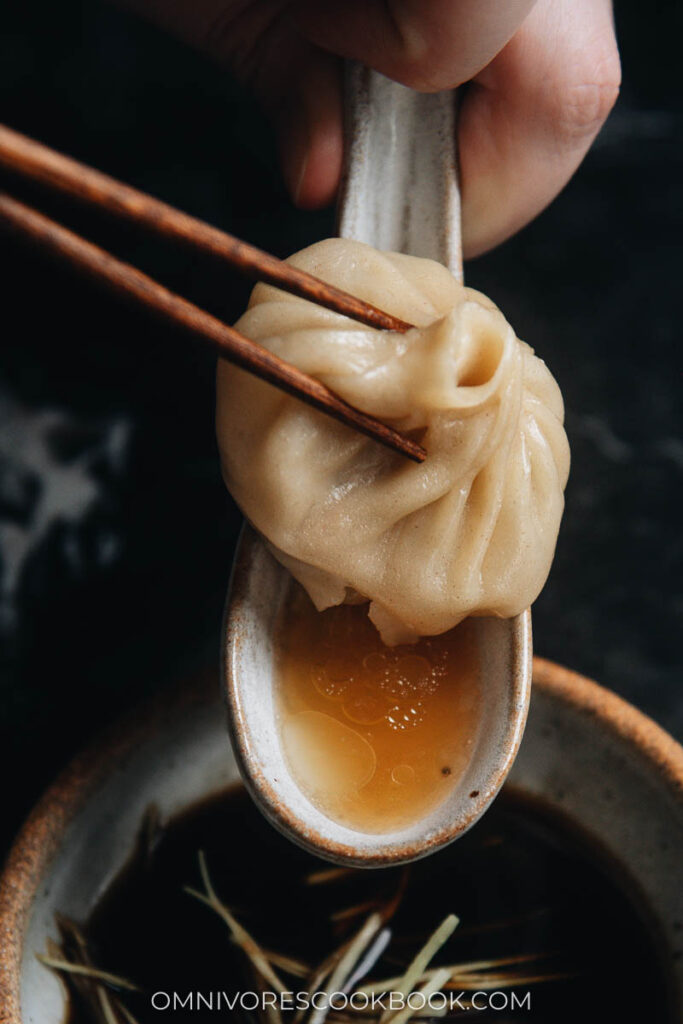
How to Shop for Chinkiang Vinegar
You can find Chinkiang vinegar at your local Chinese market or online at The Mala Market (my favorite – everything they sell is fantastically high quality) or Amazon.
As far as brands go, here are my top choices:
- Gold Plum is a very common and reliable brand of Chinkiang vinegar and you should be able to find it at a local Asian grocery for $3-5 per bottle.
- Hengshun is another Chinkiang brand, and they have an entry level vinegar in the $3-5 range, as well as a premium handcrafted version that’s aged for 6 years. I love the fancier one for special occasions, as it has a wonderful depth of flavor that lingers a bit more.
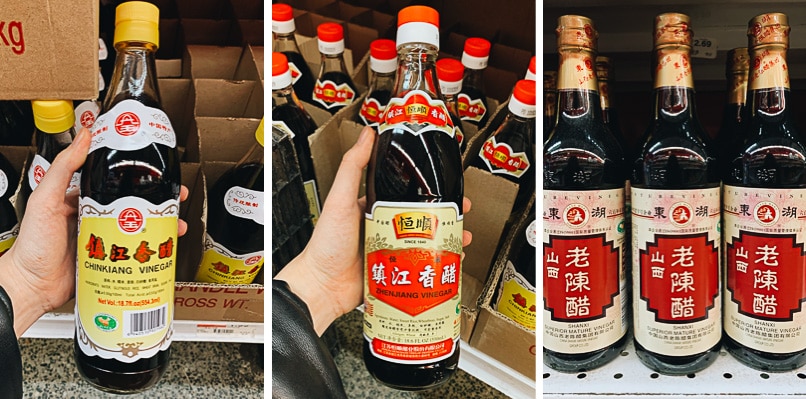
How to Store Chinkiang Vinegar
You should store your Chinkiang vinegar (or any Chinese black vinegar) in a cool, dark place. Once opened, the vinegar will taste best in the first 12 months, though it can be used for 2-3 years. Unopened, it should be good for 5 years or so.
You don’t need to refrigerate Chinkiang vinegar or Chinese black vinegar.
Substitutions
The best substitute for Chinkiang vinegar is another kind of Chinese black vinegar, and I’ll introduce several of them in the section below.
The second best substitute for Chinkiang vinegar is English-style malt vinegar, like you might see used with fish and chips. It is milder than Chinkiang but about a 70 percent match in terms of flavor.
Also worth mentioning is Taiwanese black vinegar. It doesn’t have the maltiness, but the acidity is about right, and it does have some fruitiness and Chinese herbal notes that give it some complexity.
You can use Japanese rice vinegar, though the flavor of your dish will be lacking in terms of maltiness. And you won’t get the dark color of Chinkiang, which is important in many dishes.
I don’t recommend balsamic vinegar as a substitute, since it will add a lot of unintended sweetness to the dish.
Other Types of Black Vinegar
Within China, there is a group of “Four Famous Vinegars”, which have thousands of years of history and make up an important part of the nation’s culinary heritage. Of those four vinegars, Chinkiang is the most well-known globally. Of the remaining three, two are black vinegars that are relatively similar to Chinkiang:
Sichuan Baoning Vinegar
Like Chinkiang, Baoning vinegar (保宁醋, bǎoníng cù) is made from rice and has a deep dark color. However, since it includes a few other grains, as well as numerous traditional Chinese herbs, the vinegar has a bit more complexity. The extra depth of flavor goes perfectly in spicy Sichuan dishes and really helps the spices pop.
The Mala Market carries both a 3-year aged and a super-premium 10-year aged Baoning vinegar.
Shanxi Mature Vinegar
Another black vinegar, Shanxi mature vinegar (山西老陈醋, shānxī lǎo chéncù) is made from sorghum, barley, peas, and other grains. It comes from Shanxi province in the north of China. It has a similar malty umami to Chinkiang vinegar, but overall is more intense. It’s less sweet, more fragrant, more umami, and smokier than Chinkiang. Shanxi mature vinegar works great in northern Chinese cuisine, whether used as a dipping sauce for handmade boiled dumplings or in authentic sweet and sour pork.
This 9-year old Shanxi mature vinegar is especially nice.
FAQs
Unfortunately, Chinkiang, Baoning, and Shanxi mature vinegar all contain wheat and/or barley, so these Chinese black vinegars are not gluten-free. However, Kong Yen black vinegar from Taiwan is gluten-free and may be your best bet in recipes that call for Chinkiang vinegar. Japanese rice vinegar is also a good gluten-free substitute.
Yes! You can sprinkle it as a condiment on fried seafood, sneak it into your salad dressing, or splash it onto your roasted veggies. You can use it in small amounts, anywhere you might otherwise add a squeeze of lemon or lime juice.
Not really. The acidity and salt do a great job to preserve the vinegar. The flavor will change gradually over time and the complexity will diminish. But as long as you keep the bottle away from heat, it should be usable indefinitely. Note that some sediment may form in the bottle and this is normal – you can filter the sediment with a sieve.
Chinese black vinegar, including Chinkiang black vinegar, does include some sodium, between 50 and 150 mg per tablespoon. This is much less than in soy sauce, but it can still add up, so it is something to keep in mind.
Aged vinegar is typically more expensive, but if you appreciate deeper, more nuanced flavor, it can be fun to splurge on one of the fancier aged ones. For everyday cooking, the younger vinegars are great value for the money.
Great Dishes that Feature Chinkiang Vinegar
Here are a few dishes that I think really showcase the beauty of Chinkiang vinegar:
